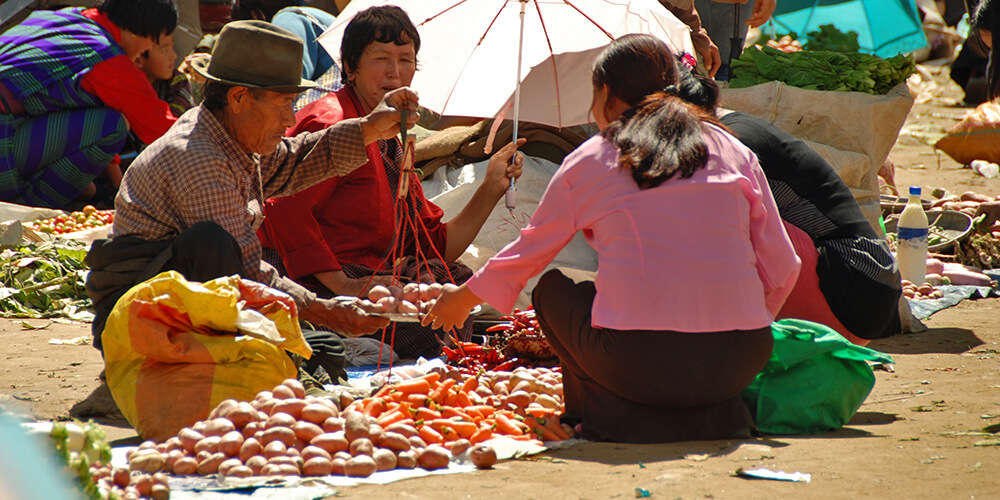I know you probably don’t want to hear about the economy of Bhutan. But there are some interesting facts about it that I wanted to share. I will try to make it really short, to keep you all awake.
The country is the size of Vermont, USA, in area and population (700,000 people). Its capital (and largest city) is Thimphu, with 70,000 people.
While countries look at their GDP (gross domestic product) to measure their economic success, Bhutan actually decided to focus on GNH (Gross National Happiness!) and it is not just words.
The concept is embedded in policies, plans, and legislation and the country identified four pillars for the implementation of this guiding principle: sustainable socio-economic development; conservation of the environment; promotion of culture, and good governance.
So Bhutan is definitely doing things very differently. With the help of India, its largest economic partner, Bhutan has developed its hydro-electricity to such a level that it can actually export to India. Hydro-electricity is its number one revenue source. Impressive, no? I have to say it is incredible to see the power of the waters running down from the Himalayas.
The second source of revenue for the country is tourism, but Bhutan decided to manage it carefully. It limits tourists to 10,000 a year, they have to pay a minimum tariff ($200 US per day, not cheap!) directly to the government bank, which keeps 40% of the revenues.
The country is also vastly covered with forests (70% of the land), but again, while it could get high revenues from such timber, it is very careful to avoid excessive cuts and limit them to local needs.
Being a small country, Bhutan is in need of labor and is getting its cheap labor from India (Indians are the only ones who don’t have to pay the daily tariff to get in the country). Nowadays, you can see many Indians doing construction work along the roads of Bhutan particularly between Paro, where the airport is, and the capital, Thimphu.
Next year, there will be major celebrations for the 100-year anniversary of the kingdom, the coronation of the 5th king and the beginning of the democracy (popular vote) offered by the king. Bhutan has been working hard on that road for the past two years already, building a 2-lane road for its VIP guests!
It makes for a surprising scene in Thimphu on Sunday afternoons, when suddenly there are more Indian faces that Bhutanese faces in the streets…
So, is this country, which had closed borders until the mid-80s, and has very strong buddhist traditions succeeding at its vision?
Well, I will let you judge for yourself. Most of the roads are still one lane, and when another car comes facing you, oh well, both cars go half way on the road shoulder.
But they are working really hard to improve such a transportation structure. They only have had TV for 6 to 8 years, but we had wireless internet in the room of our hotel and their cellular phone coverage in the mountains of the Himalayas is better than we have back in the US, in Vermont!
Their employment rate is 3%, their poverty rate is 31% and they are starting to get cases of AIDS, a sign of the country opening to the world.
And as a last note, it was defined as the 8th happiest country in world, by a survey of the University of Leicester (Canada was 10th on that list)!
Well, that was your first class (and probably the only one ever) on the economy of Bhutan!

